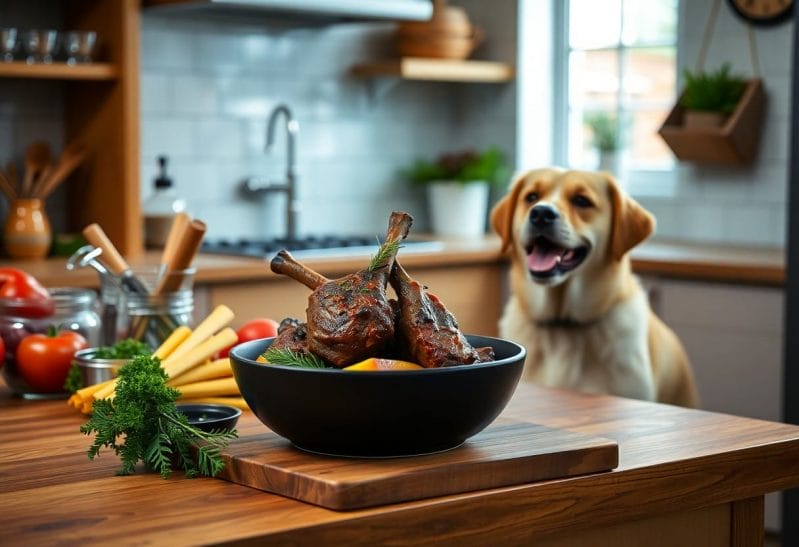On this topic of how to measure your dog height, you may find it necessary to know your it for various reasons, such as choosing the right harness or ensuring proper fitting in a crate. Measuring your dog’s height might seem straightforward, but it’s crucial to do it accurately for the best results. In this guide, you’ll learn the right techniques to measure your dog effectively. For detailed instructions, check out this resource on How To Measure a Dog, ensuring you get the perfect measurement every time.

Key Takeaways:
- Measurement Position: Ensure your dog is standing on a flat surface with its feet placed firmly apart for an accurate measurement.
- Use a Measuring Tool: Utilize a measuring tape or a yardstick to measure from the ground to the highest point of the dog’s shoulders (withers).
- Document and Compare: Record the height and periodically compare it to track your dog’s growth, especially for puppies or young dogs.

Understanding Dog Height
While you might think that dog height is merely a numeric value, it actually plays a crucial role in various aspects of your furry friend’s life. Understanding your dog’s height not only helps you assess their growth but also ensures that they are appropriately fitted for grooming, veterinary care, and even training. This information can help you choose the right equipment, such as leashes or harnesses, and can be beneficial should you ever need to board or transport your dog.
Importance of Measuring Dog Height
To accurately gauge your dog’s health and growth, measuring their height is necessary. It provides insights into their breed standard, helping you determine if they are within a normal range. Additionally, it aids veterinarians in diagnosing potential health issues related to size.
Factors Affecting Dog Height
Even though genetics is the primary factor in determining your dog’s height, other factors can influence this measurement. Consider the following:
- Breed: Different breeds have distinct height ranges.
- Age: Dogs grow until a certain age, which can vary by breed.
- Gender: Generally, females can be smaller than males of the same breed.
Thou must also keep in mind that nutrition and overall health can impact growth.
Measuring your dog’s height accurately involves understanding these influencing factors. Here are some additional considerations:
- Health conditions: Some medical issues can stunt growth.
- Environment: A stable environment can support proper growth.
- Diet: Adequate nutrition is crucial during the growth phase.
Thou should monitor these elements to ensure your dog reaches their full genetic potential.
How to Measure Your Dog’s Height
Now that you understand the importance of knowing your dog’s height, let’s explore how to accurately measure it.
Tools Needed for Accurate Measurement
One necessary tool you’ll need is a measuring tape, preferably a flexible one that can easily contour to your dog’s size. Additionally, a flat surface such as a wall or a hard floor will work best. You may also want a friend or family member to help keep your dog steady during the measurement.
Step-by-Step Measurement Process
If you want to measure your dog’s height correctly, follow this simple guideline:
| Step | Description |
|---|---|
| 1 | Position your dog against a flat wall to ensure they are standing straight. |
| 2 | Make sure your dog’s front paws are aligned and standing firmly on the ground. |
| 3 | Gently place a straight object, like a yardstick, on the top of their shoulders. |
| 4 | Measure from the ground up to where the object meets the shoulder. |
To ensure an accurate height measurement, it’s important that your dog is calm and in a relaxed standing position. Avoid any distractions that might cause them to shift or move during the process. Take the measurement at the highest point of their shoulders, as this is commonly referred to as the “withers.” This ensures you get the most accurate representation of their height.
Common Mistakes to Avoid
Dogs can often move around or get fidgety while measuring, so it’s important to avoid any distractions that might affect your results.
Plus, one common mistake is measuring while your dog is slouching or not standing straight. Always make sure they are positioned correctly, as this will impact the accuracy of your measurement. Ensure you are using the correct measuring technique, and double-check your results to guarantee precision.
Tips for Measuring Dog Height
For an accurate measurement of your dog’s height, be sure to follow these tips:
- Use a sturdy measuring tape or ruler, preferably one that is flexible for easier handling.
- Ensure your dog is standing on a flat, level surface to avoid discrepancies.
- Measure from the ground to the highest point of your dog’s shoulder for proper height.
- Have someone assist you to keep your dog still during the measurement.
- Consider measuring your dog multiple times to ensure consistency.
Any small detail can affect your measurement, so stay attentive to these factors!
Choosing the Right Time to Measure
If you want the best results, consider measuring your dog when they are calm and relaxed. Avoid times when they are overly excited or restless, as this can affect their posture and lead to inaccurate measurements. A time after exercise, when they are relaxed, is ideal for achieving precise results.
How Different Breeds Might Influence Measurement
Measure your dog’s height while keeping in mind that different breeds have unique conformation and builds.
Influence of breed characteristics is significant when measuring your dog’s height. Some breeds have a more elongated body or variations in leg length, which may affect how you should measure them. For instance, a Dachshund might require extra consideration for their distinctive long body, while a Great Dane likely presents a different challenge due to their height. Understanding the specifics of your dog’s breed may help you adjust your measuring technique for optimal accuracy and comfort.
To wrap up
The process of measuring your dog’s height is straightforward and necessary for proper care and grooming. By using a measuring tape or ruler against a wall or floor, you can determine your dog’s height accurately. Be sure to measure from the ground to the highest point of your dog’s shoulder for the most reliable result. Regularly taking note of your dog’s height can help you track their growth and ensure they’re within a healthy range for their breed. Your attention to detail in this simple task can greatly benefit your furry friend.
Q: How do I accurately measure my dog’s height?
A: To accurately measure your dog’s height, follow these steps: First, ensure your dog is standing on a flat, level surface. Position your dog in a relaxed stance with their front legs straight and their head in a neutral position. Use a measuring tape or a yardstick to measure from the ground to the highest point of your dog’s shoulder, known as the withers. Record the measurement in inches or centimeters. For more precision, you may want to ask a friend to help hold your dog steady while you take the measurement.
Q: At what age should I measure my dog’s height?
A: It’s best to wait until your dog has reached full maturity before measuring their height, which varies by breed. Smaller breeds may mature around 9-12 months, while larger breeds can take up to two years to fully grow. Measuring your dog at different stages can give you insight into their growth pattern, but for official measurements, consult your vet regarding the appropriate age for your dog’s breed.
Q: Why is it important to measure my dog’s height?
A: Measuring your dog’s height is important for several reasons. It helps determine the appropriate size of dog equipment such as crates, collars, and harnesses. Additionally, height measurements can assist vet professionals in assessing your dog’s health and monitoring their growth over time. Furthermore, if you plan to participate in dog shows or competitions, accurate height measurements are often required to meet the breed standards.











